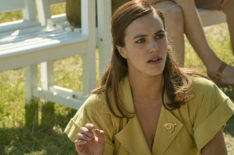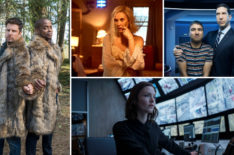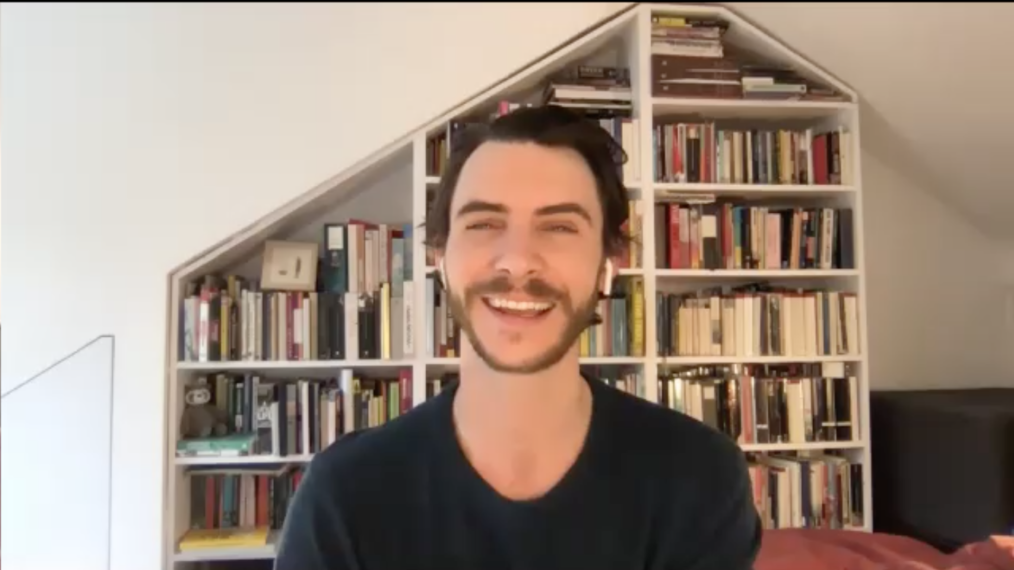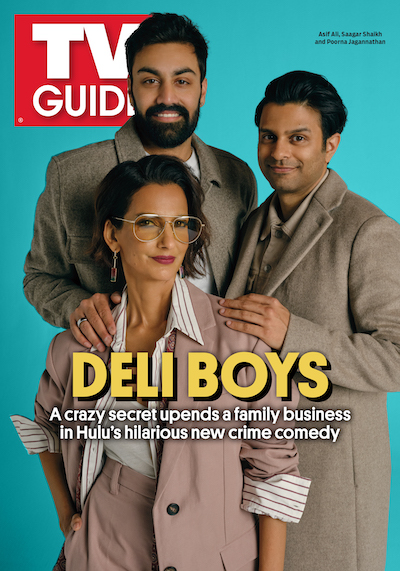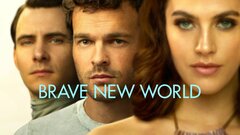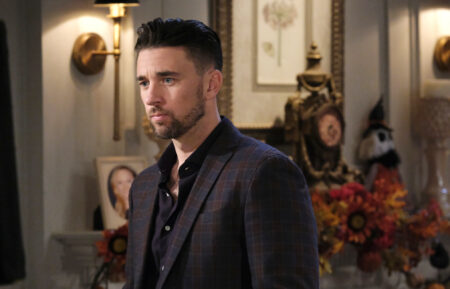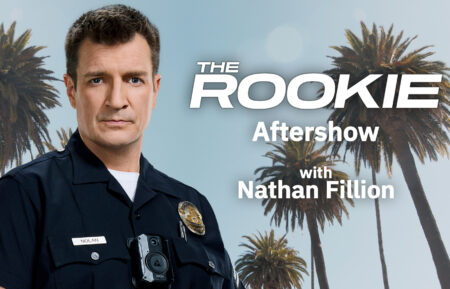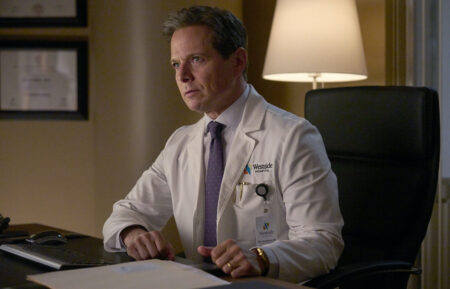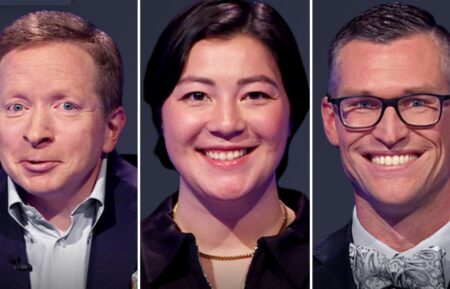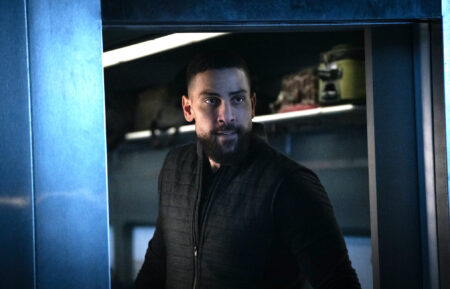‘Brave New World’ Introduces a Sexed-Up Sci-Fi Dystopia in Premiere (RECAP)
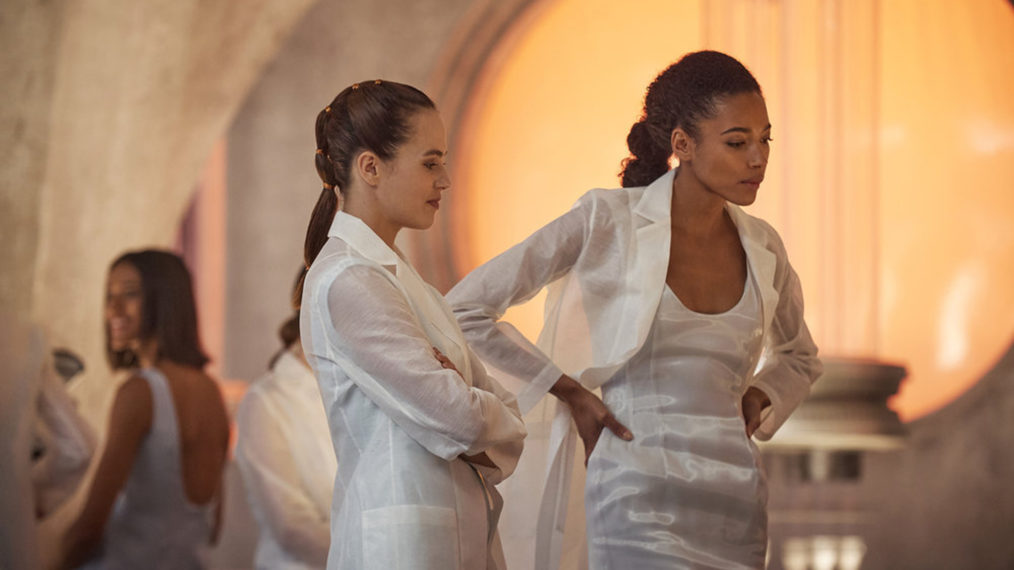
Spoiler Alert
[Spoiler Alert: This recap contains spoilers from Brave New World Season 1 Episode 1, “Pilot.”]
Welcome to dystopia, no, I don’t mean the year 2020, I’m talking about Brave New World, a 21st-century adaptation of Aldous Huxley’s literary classic. Huxley’s 1932 novel—a staple in high school English literature classes—is a hallmark of the science-fiction genre, notable for its prescient themes and imagined futuristic technology. With the recent rise in highbrow sci-fi series, it was only a matter of time before someone gave Brave New World the extravagant, big-budget television treatment.
There have been several adaptations of varying degrees of success over the years, from radio dramas to TV movies to stage productions. Ridley Scott even tried his hand at a blockbuster film version a few years ago, though shelved the idea after struggling to make the source material fit for the modern world. This latest adaptation — headed by David Wiener (Homecoming) alongside comic icon Grant Morrison and his Happy! collaborator Brian Taylor — also had an inauspicious start. It spent years bouncing around networks before eventually landing on NBC’s new Peacock streaming service, and a streamer is perhaps the most fitting home for a show set in a tech-obsessed future.
But do we really need another high-concept, dystopian sci-fi drama when the likes of Westworld, Black Mirror, and Devs already take up plenty of televisual real estate in that area? Comparisons to these shows will always be Brave New World‘s biggest hurdle, even if it’s working from source material that preceded and inspired those series—Huxley’s novel undoubtedly influenced Westworld given the shared namesakes of two of its main characters in Ford and Bernard. But, Westworld came first in TV terms, and that’s a reality Brave New World can’t escape, especially when the similarities are so blatant, not just thematically but aesthetically.
Like Westworld, particularly the most recent season, Brave New World occurs in a shiny metallic cityscape with glass-walled corridors and slimline spacecraft taxis. There’s even a violence-laced theme park on the outskirts of Earth where tourists can experience the ways of the old. And that’s before we get into the shared themes of free will, technological tyranny, and data privacy. So, as someone with PTWD (Post-Traumatic Westworld Disorder), you’ll forgive my reservations coming into this series. Yes, Westworld had a stellar first season, but it soon crumpled in on itself with its overly complicated timelines, tin-eared exposition, dour, humorless dialogue, and nauseating self-seriousness. I don’t think I can stomach another series of that.
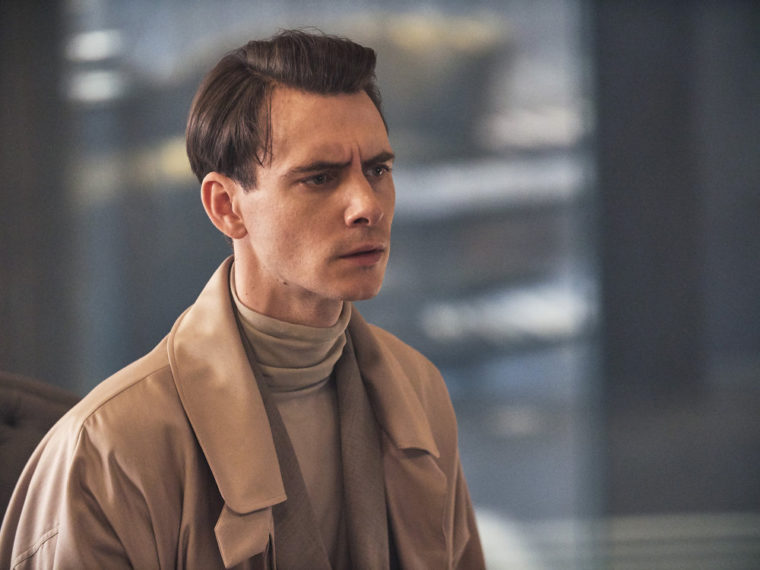
NBC Peacock
However, to its credit, Brave New World dodges any timeline trickery and narrative nonsense, at least in the pilot episode. Instead, it focuses on setting up its world, and it does so effectively. We quickly get a sense of how things operate in the city of New London without being bashed over the head with the exposition hammer. And there’s still enough intrigue leftover for us to want to find out more in future episodes. That’s not to say the characters or dialogue are revolutionary or dripping in nuance, but there is a welcoming, playful tone. There’s also some humor and unexpected creative flourishes that help brighten up a show whose color palette rarely moves beyond pastel grays.
Like the book, Brave New World is set in a dystopia, though sold to its citizens as a utopia. In New London, there are three rules: no privacy, no family, no monogamy. “Everyone is happy” reads the title card as Goldfrapp’s “Happiness” soundtracks us through a clinically-clean city of skyscrapers and water fountains. It’s a world where there are no mothers or fathers; children are genetically engineered in test tubes and assigned to specific social castes—from the super-privileged Alphas down to the humble Epsilon laborers. Everyone plays their part and is happy to do so—if not, their mood-altering drugs (called “soma”) will make them think otherwise.
Our first eyes into this world belong to Beta Plus scientist Lenina Crowne (Downton Abbey alum Jessica Brown Findlay). Lenina is scolded by fusty Alpha Plus councilor Bernard Marx (Harry Lloyd) for not having enough sex. Or, that should be, not having enough sex with different partners. Lenina has exclusively been sleeping with Henry Foster (Sen Mitsuji), and exclusivity is forbidden in the World State. She denies Bernard’s accusation, reluctantly reciting the “everyone belongs to everyone else” mantra learned from years of conditioning. However, Bernard has evidence, flashing up a holographic sex tape of her most intimate encounters—a clear breach of privacy if such a thing existed.
Bernard is a hypocrite, however, as he too is becoming disenchanted with the rules of this society. He’s a man searching for connection in a world where everyone is connected—each person hooked up via an optic interface (an iris-piercing contact lens) to an all-seeing system called Indra. Bernard’s discontent worsens after an Epsilon worker throws himself off a balcony. If everyone is meant to be happy in their assigned roles, why would someone take their own life? This kind of thing just doesn’t happen. Despite being told it was an “accident” by the Director of Stability (Ed Stoppard), Bernard remains suspicious and curious about its broader meaning. Do people have a wider range of emotions than they’re led to believe?
When Bernard seeks advice from his friend, Emotional Engineer Wilhelmina “Helm” Watson (Hannah John-Kamen), he’s told to take his soma and distract himself with society’s luxuries. Helm even gives him a free invite to the Pleasure Garden—a neon-lit nightclub where the dance floor escalates from rhythmic grinding to full-on orgy by the end of the night. It’s almost ritualistic how sex happens in New London, aided by the sensory explosions of Helm’s interactive performance pieces (called “feelies”). I guess the people look happy, as much as you can read their expressions under the red neon lighting, well, everyone but Bernard and Lenina, who lock eyes across the dance floor.
After Lenina sees Bernard turn down the advances of a couple of sexy acquaintances (everyone is HOT with a capital ‘H’ in New London), she follows him home and calls him out for his hypocrisy. After all, he tells her to have sex with others, and yet he can’t do it himself. “It’s not real, any of it,” Bernard confesses in a sudden moment of candor. “I’m not who I’m supposed to be.” Recognizing a shared, if indescribable, feeling, Lenina decides to help Bernard by projecting an image of them having sex, hoping it will appease the watchful eyes of Indra. Neither is sure it will work, but, in this moment, something of a real connection is made.
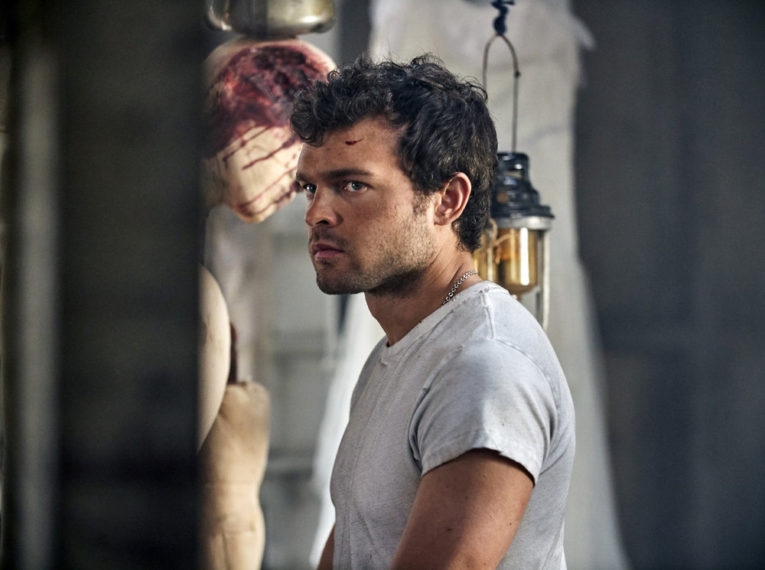
NBC Peacock
In an attempt to get Bernard to chill out and fall back in line, the Director orders him to take a vacation to the Savage Lands — a part of Earth untouched by the World State that still partakes in outdated customs, like childbirth and marriage, yuck! The Savage Lands is the show’s most compelling aspect, especially how it’s introduced as a sort of live-action redneck Disney World. A spoof commercial advertises the wonders of the Savage Lands, such as its hysterical Black Friday sale stampedes and backwater chapel weddings. It’s like something from Better Off Ted, and I mean that in the best possible way — it’s genuinely funny and unexpected.
The Savage Lands is more than just a theme park for new world tourists to get their kicks, though. People still live there. It’s rural Americana meets Mad Max, in both look and customs. The people are poor, and the food is scarce, but they still hold on to their family values, monogamous relationships, and even comforts like music (the show has a killer soundtrack from Radiohead to Car Seat Headrest). It’s one of the more interesting reimaginings from the book. In Huxley’s novel, the Savage Lands is a mix of Native American tropes and outdated racial stereotypes. Updating the setting for the TV adaptation avoids the questionable and potentially offensive material while also creating something much more timely.
Our introduction to the Savage Lands comes via John (Alden Ehrenreich), a blue-collar, plain white tee-wearing, Diet Coke commercial type, who works as a fixer-upper at the theme park. John is an outcast even amongst his own people, pushed around by the other savages and unlucky in love with the already-spoken-for Madysun (Lara Peake, who looks so much like a young Drew Barrymore I had to do a double-take). He lives with his mother, Linda (an underutilized Demi Moore), a mentally unstable recluse who sits at the window every day in her unwashed negligee, dreaming of a world far away. John is very much the adult in this relationship, the carer and provider, though Linda’s talk of John’s estranged father suggests a dark reasoning for their predicament.
There’s also rumblings of an uprising within the Savage Lands. John is kidnapped by a group of savages, including Madysun, who want to use his access to the park to launch an attack on the outsider tourists. Again, this is all very Westworld, and the characters of this rebellion are painted just as thinly here as in that show, though it is only the first episode. There is at least some intrigue with John and his background, even if his role right now is mostly reactionary and primarily a series of brooding expressions. If we’re following the books, then his path should cross with Bernard and Lenina soon enough, so that should provide an opportunity for character development.
I would say this is an ambitious pilot for a show with a lot of potential, though not yet fully formed. This episode laid the groundwork, and now it’s about expanding from here. Right now, the characters are relatively paint-by-numbers, and its themes of free will and privacy and social class, while timely, aren’t really saying anything new. But there are some surprising and highly-entertaining creative quirks, like the aforementioned Savage Lands commercial, and a tongue-in-cheek humor to some of the dialogue and performances. I’m hoping the show leans into those elements in future episodes because I’m not sure I can handle another dreary dystopian drama with all the color and excitement of an IKEA showroom. 2020 could do with a laugh.
Brave New World, Now Streaming, Peacock
Click over here for more of our Brave New World recaps.
From TV Guide Magazine
Crime, Comedy & Convenience Stores: Unwrapping Hulu's 'Deli Boys' With the Cast
Cupcakes, corndogs…and cocaine?! Two brothers find themselves in a hilarious pickle when they inherit an unseemly bodega biz in Hulu’s new comedy Deli Boys. Find out how The Sopranos and Real Housewives of Orange County influenced the cast. Read the story now on TV Insider.

